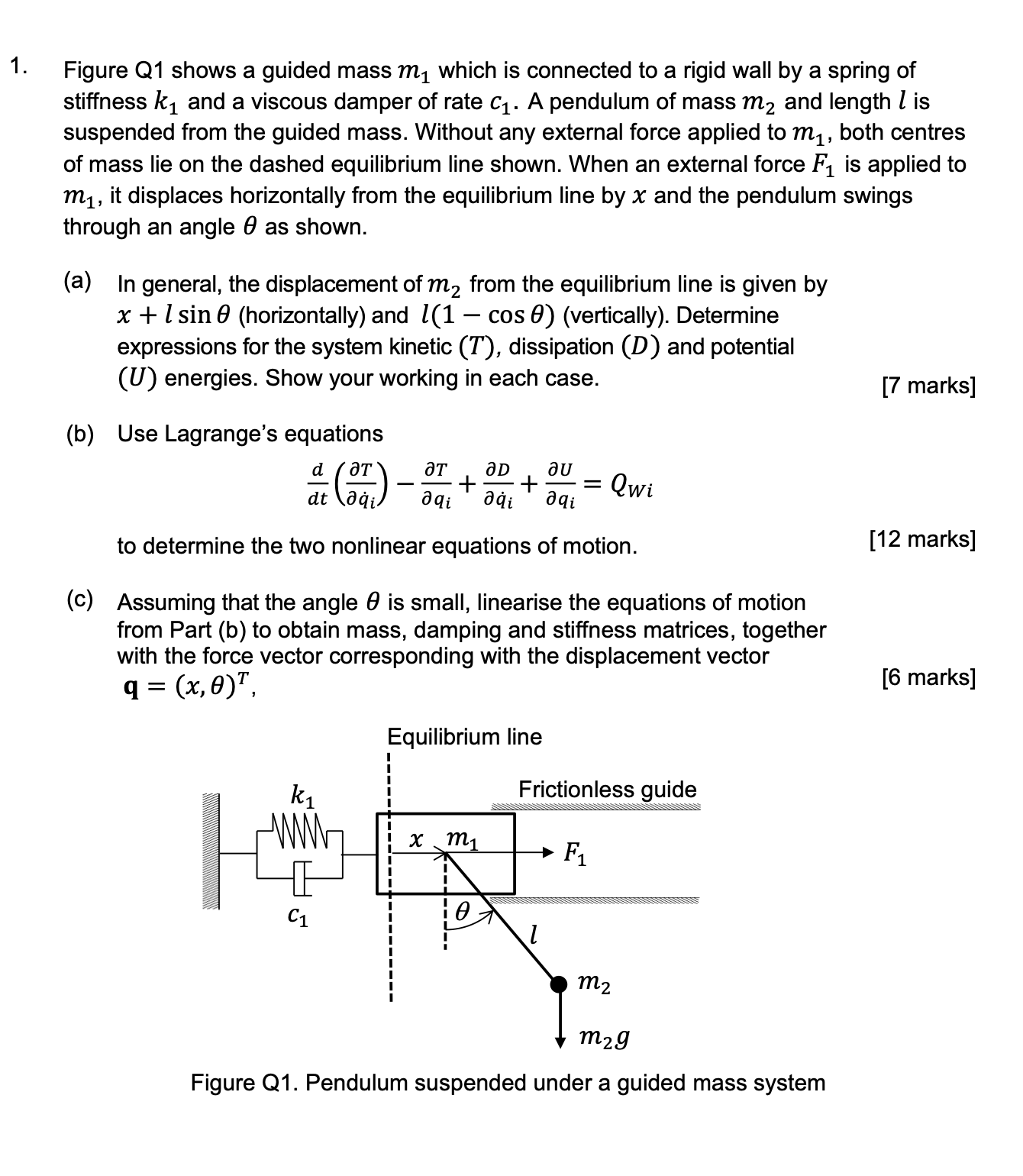Answered step by step
Verified Expert Solution
Question
1 Approved Answer
1. Figure Q1 shows a guided mass m which is connected to a rigid wall by a spring of stiffness k and a viscous

1. Figure Q1 shows a guided mass m which is connected to a rigid wall by a spring of stiffness k and a viscous damper of rate C. A pendulum of mass m and length l is suspended from the guided mass. Without any external force applied to m, both centres of mass lie on the dashed equilibrium line shown. When an external force F is applied to m1, it displaces horizontally from the equilibrium line by x and the pendulum swings through an angle as shown. (a) In general, the displacement of m from the equilibrium line is given by - x + 1 sine (horizontally) and (1 cos 0) (vertically). Determine expressions for the system kinetic (T), dissipation (D) and potential (U) energies. Show your working in each case. (b) Use Lagrange's equations d dt = (377) - aD au + + = aqi Qwi to determine the two nonlinear equations of motion. (c) Assuming that the angle 0 is small, linearise the equations of motion from Part (b) to obtain mass, damping and stiffness matrices, together with the force vector corresponding with the displacement vector q = (x, 0), [7 marks] [12 marks] [6 marks] Equilibrium line Frictionless guide k x m1 F C1 m2 m2g Figure Q1. Pendulum suspended under a guided mass system
Step by Step Solution
There are 3 Steps involved in it
Step: 1
Lets break down this problem into parts as required a Determine the kinetic T dissipation D and potential U energies Given m1 is displaced horizontally by x m2 has horizontal displacement x l sin thet...
Get Instant Access to Expert-Tailored Solutions
See step-by-step solutions with expert insights and AI powered tools for academic success
Step: 2

Step: 3

Ace Your Homework with AI
Get the answers you need in no time with our AI-driven, step-by-step assistance
Get Started


